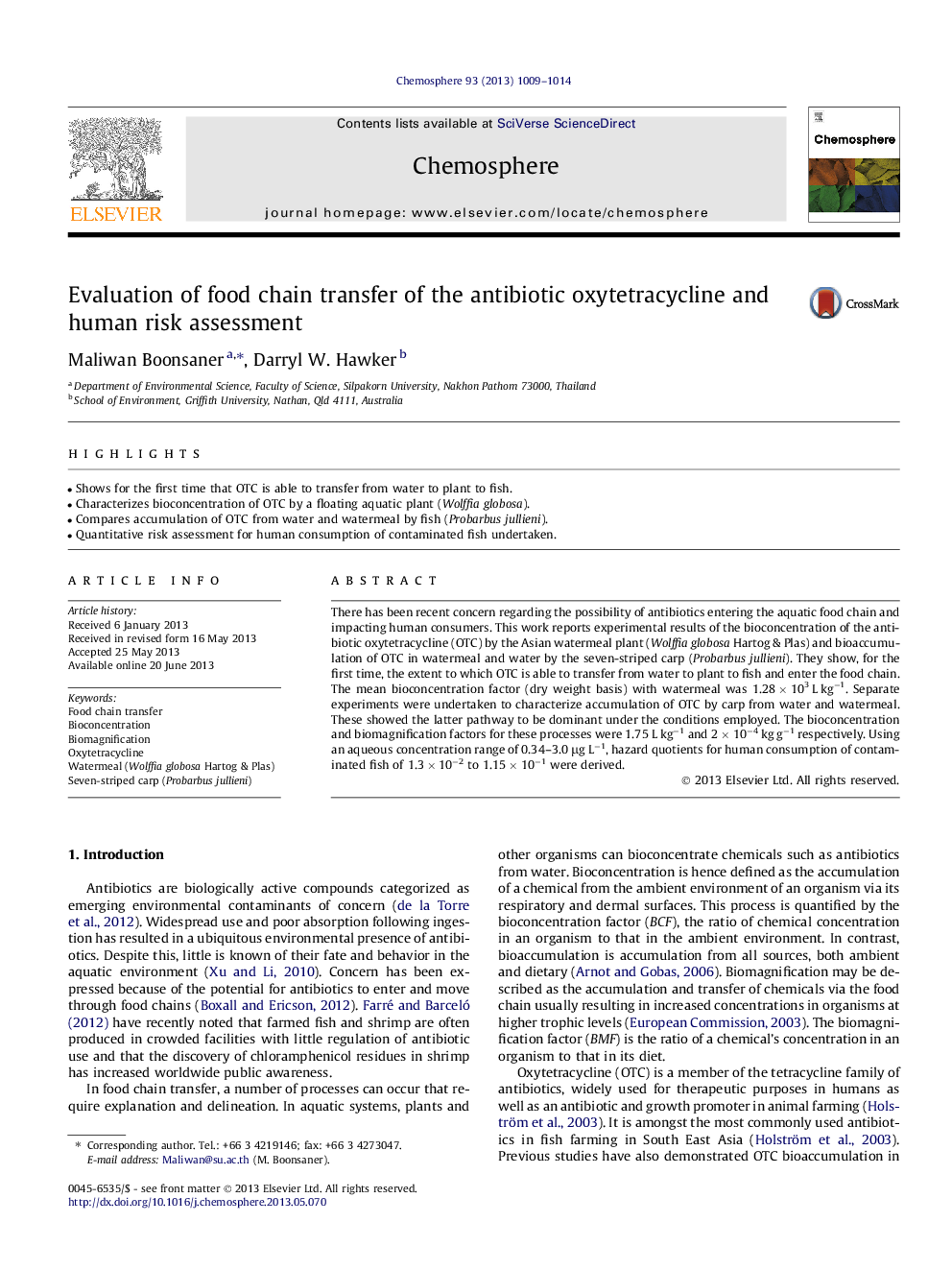| Article ID | Journal | Published Year | Pages | File Type |
|---|---|---|---|---|
| 6310291 | Chemosphere | 2013 | 6 Pages |
â¢Shows for the first time that OTC is able to transfer from water to plant to fish.â¢Characterizes bioconcentration of OTC by a floating aquatic plant (Wolffia globosa).â¢Compares accumulation of OTC from water and watermeal by fish (Probarbus jullieni).â¢Quantitative risk assessment for human consumption of contaminated fish undertaken.
There has been recent concern regarding the possibility of antibiotics entering the aquatic food chain and impacting human consumers. This work reports experimental results of the bioconcentration of the antibiotic oxytetracycline (OTC) by the Asian watermeal plant (Wolffia globosa Hartog & Plas) and bioaccumulation of OTC in watermeal and water by the seven-striped carp (Probarbus jullieni). They show, for the first time, the extent to which OTC is able to transfer from water to plant to fish and enter the food chain. The mean bioconcentration factor (dry weight basis) with watermeal was 1.28 Ã 103 L kgâ1. Separate experiments were undertaken to characterize accumulation of OTC by carp from water and watermeal. These showed the latter pathway to be dominant under the conditions employed. The bioconcentration and biomagnification factors for these processes were 1.75 L kgâ1 and 2 Ã 10â4 kg gâ1 respectively. Using an aqueous concentration range of 0.34-3.0 μg Lâ1, hazard quotients for human consumption of contaminated fish of 1.3 Ã 10â2 to 1.15 Ã 10â1 were derived.
